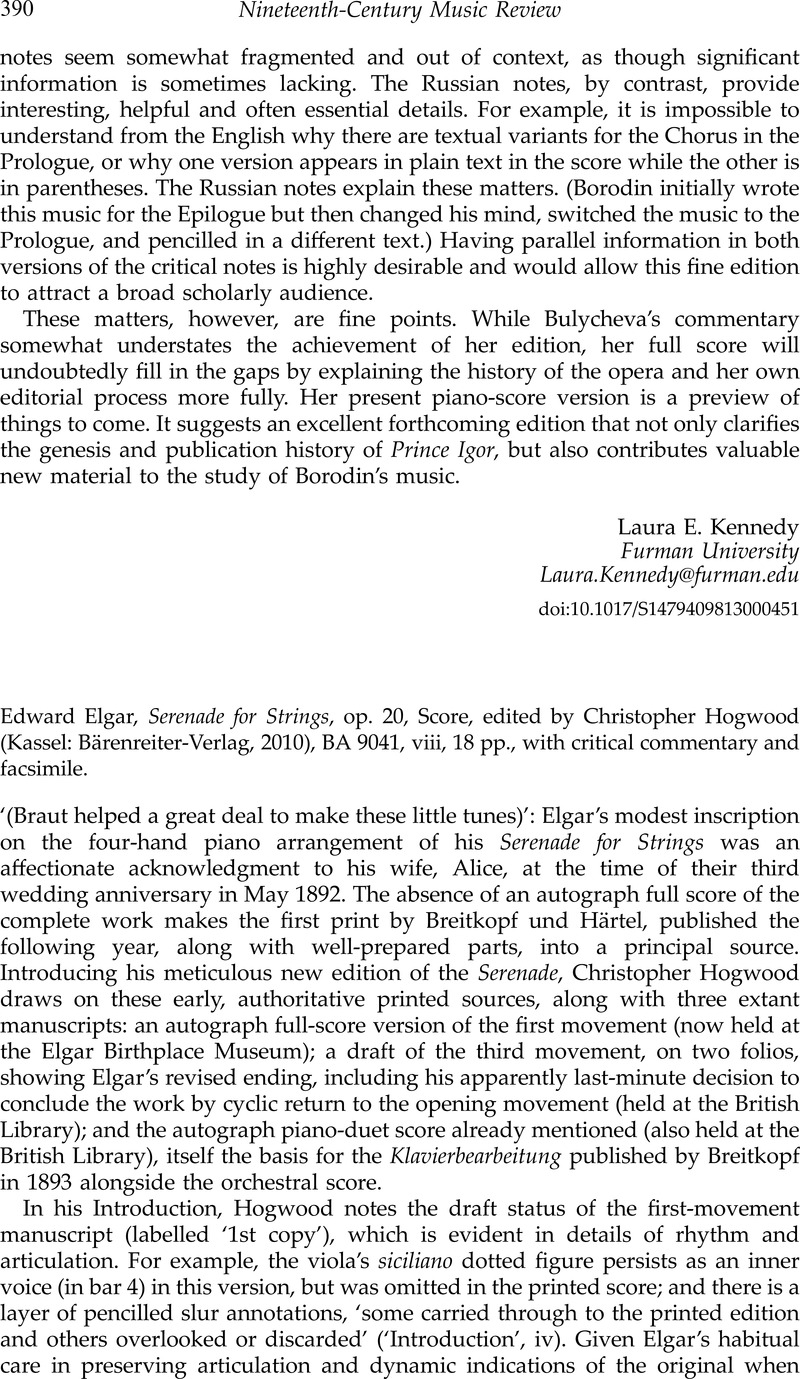No CrossRef data available.
Article contents
Edward Elgar, Serenade for Strings, op. 20, Score, edited by Christopher Hogwood (Kassel: Bärenreiter-Verlag, 2010), BA 9041, viii, 18 pp., with critical commentary and facsimile.
Published online by Cambridge University Press: 06 January 2014
Abstract

- Type
- Score Reviews
- Information
- Copyright
- Copyright © Cambridge University Press 2013
References
1 Edward Elgar, Music for String Orchestra, ed. Julian Rushton (Rickmansworth: Elgar Society Edition, 2011)Google Scholar
2 For example, describing the string-orchestral autograph of the third movement, Rushton observes Elgar's ‘segue No. ii’ direction in ink, and his pencil addition ‘or iv’, as evidence that Elgar was still considering a longer sequence of movements for the work. Both Hogwood and Rushton note that Elgar's cyclic rounding out of the Serenade resembles similar solutions adopted by Tchaikovsky and Dvořák in their own string serenades, each published a decade or more before Elgar's.
3 McVeagh, Diana, Edward Elgar: His Life and Music (London: J.M. Dent, 1955): 200–201Google Scholar
Riley, Matthew, ‘Elgar the Escapist?’ in Edward Elgar and His World, ed. Byron Adams (Princeton: Princeton University Press, 2007): 39–57Google Scholar
4 Two such details in Hogwood's Larghetto may be mentioned: the cresc. molto e string. (bars 4–5) starts on the downbeat, whereas in Rushton, the marking comes one quaver later; in bars 25–26, the violin II hairpins in Hogwood's score end before the bar line, whereas Rushton's score has them traverse the bar line, as if to match the rhythmic syncopation. It is hard to judge if such subtle graphic contrasts are to be viewed by conductors as genuine editorial distinctions, or merely as a function of contrasting notational conventions adopted by typesetters at Bärenreiter and the Elgar Society.
5 McVeagh, Diana, Elgar the Music Maker (Woodbridge: Boydell, 2007): 15Google Scholar
6 Burley, Rosa and Carruthers, Frank C., Edward Elgar: the Record of a Friendship (London: Barrie and Jenkins, 1972): 31Google Scholar
7 Possibly the only exception occurs in the closing cello and viola iterations of the siciliano rhythm, in bars 68–71 of the Allegretto, where smaller slurs and rhythmic ties – some missing in the Breitkopf score and parts – appear visually unclear.
8 Cumming, Naomi, ‘The Subjectivities of “Erbarme Dich” ’, Music Analysis 16 (1997): 5–44CrossRefGoogle Scholar


